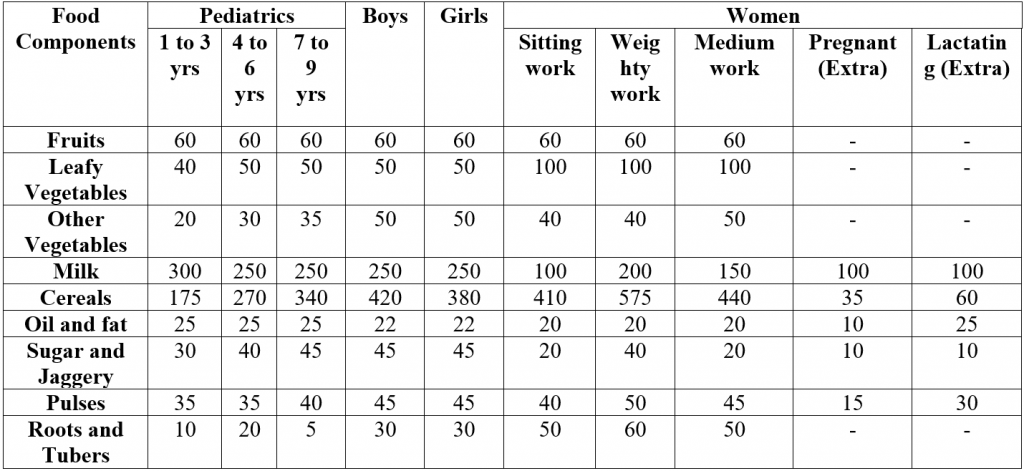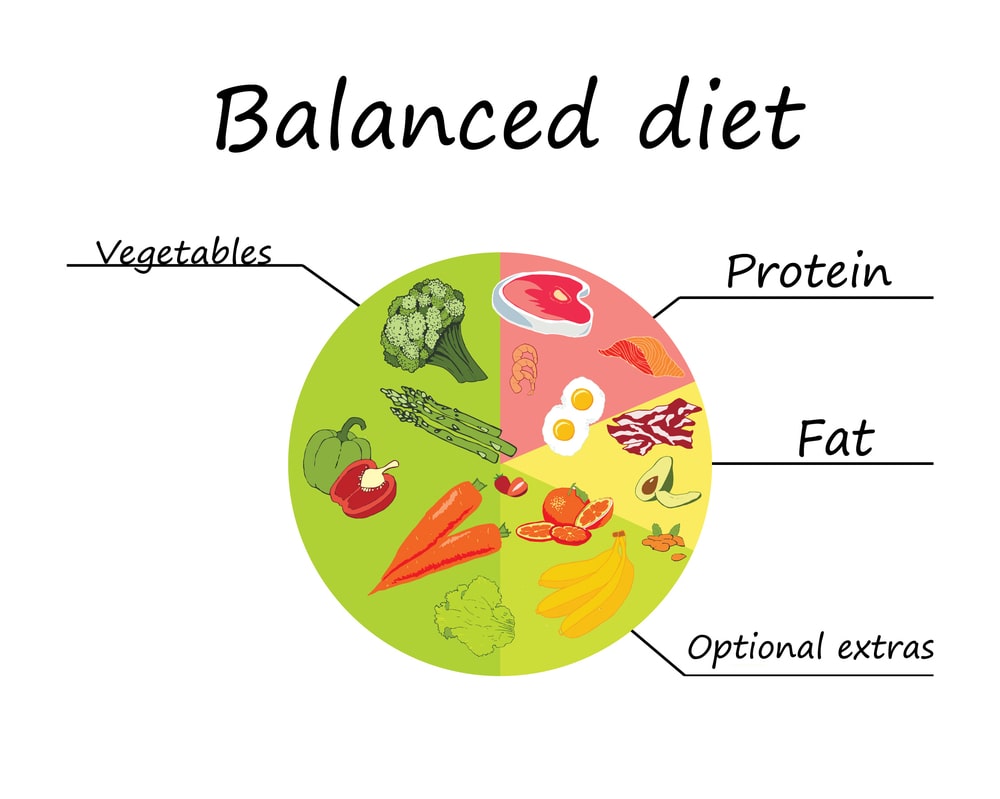Short Note on Balanced Diet: A balanced diet may be defined as a diet that contains a sufficient quantity of all the nutrients required by a body in a day (Refer Fig.1).
A balanced diet includes some important nutrients, vitamins, carbohydrates, fibers, fats, proteins, and minerals.
The requirements or need of the nutrients depend on the gender, age, the health of the individual. (Table 1 and 2)

Importance of a Balanced Diet
Table of Contents
- A balanced diet enhances the ability to work.
- Balanced diet helps in the growth of the body.
- A balanced diet enhances the immune system of the body and increases the ability to fight against diseases.
- Balanced diet leads to good mental health and physical health.
- Excessive intake of carbohydrates and refined should be avoided, which affects physical health.


Components of Balanced Diet
A balanced diet contains Proteins, Fats, Carbohydrates, Vitamins, and Minerals.
1. Vitamins and Minerals:
- Green vegetables and fruits are rich sources of minerals and vitamins.
- They boost the immune system of the body against diseases.
- Its deficiency leads to various disease conditions.
2. Proteins:
- Eggs, meat, Yogurt, Soy products, Seeds, Nuts, etc. are rich sources of proteins.
- Proteins are also obtained from various dairy products.
- Intake of protein is essential for proper growth.
- Proteins are also essential for building muscles and the most common protein deficiency disease is Kwashiorkor.
3. Carbohydrates:
- Potatoes, Milk, corn, bread, rice, wheat are rich sources of Carbohydrates.
- Carbohydrates are the main components of a balanced diet and they are the main sources of energy and Deficiency of carbohydrates may lead to Ketosis.
4. Fats:
- Nuts, whole eggs, cheese, ghee, butter, oil are the rich sources of fats and some part of our energy necessity is satisfied by fats.
- Deficiency of fats may lead to loss of appetite, skin-related problems, and weight loss, etc.

Organization of Balanced Diet
There are some important ways to organize the balanced diet and it includes:
- Divide the servings for each meal.
- Make a list or chart i.e. number of quantities from each food group.
- Determine the number of meals.
- Recheck to assure that all food items are included in required quantity.
Make sure you also check our other amazing Article on : Health Education
